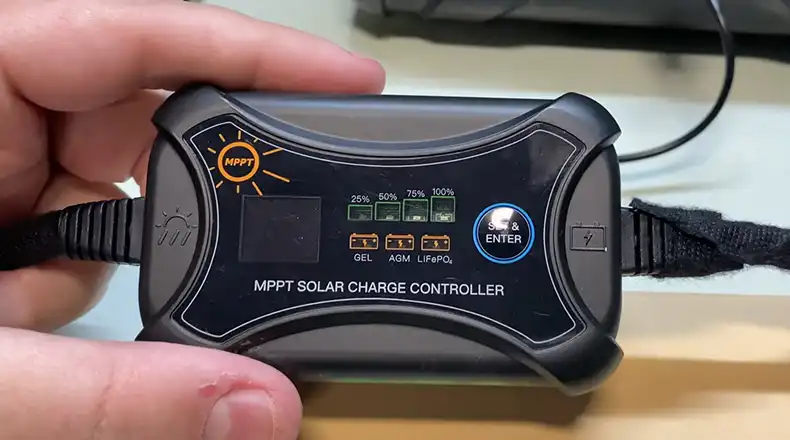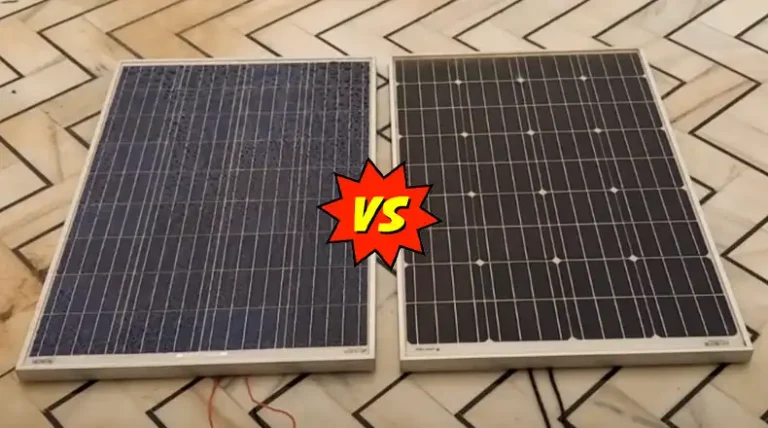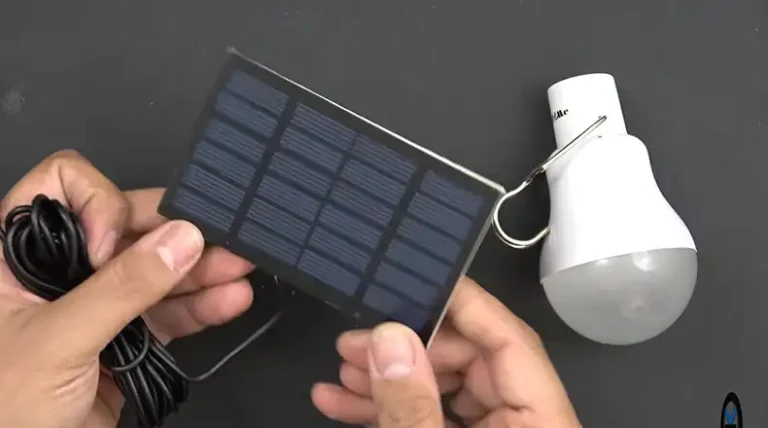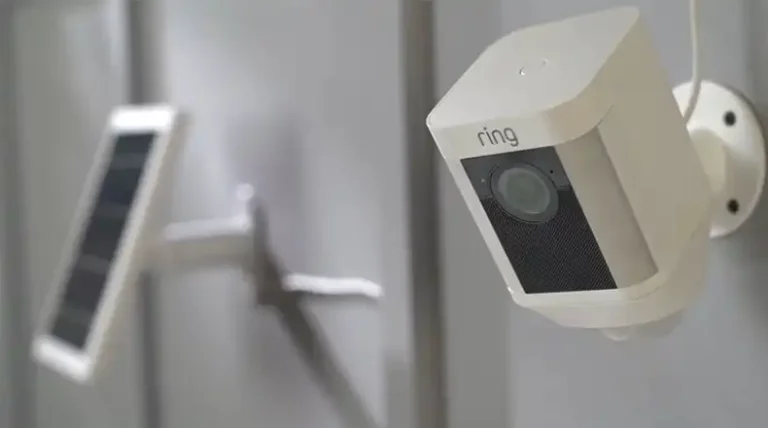Will an MPPT Charge an AGM Battery in The Solar Panel?
Charging absorbent glass mat (AGM) batteries with maximum power point tracking (MPPT) solar charge controllers is an increasingly popular strategy for keeping batteries optimized in renewable energy systems. However, AGM batteries have different charging needs than flooded lead-acid batteries. In short, you can charge your AGM batteries with an MPPT charge controller without any issues.
We’ll explore those unique AGM charging specifications and how MPPT controllers are well-equipped to meet them. Discover why MPPT controllers are the recommended approach for concurrently powering loads and charging AGMs as part of a high-performing, long-lasting solar system.

Charging Requirement for an AGM Battery
AGM batteries, like any other type of battery, have specific charging requirements that need to be met to ensure optimal performance and longevity. These requirements include:
Proper Voltage
AGM batteries typically require a charging voltage of around 14.4 to 14.8 volts. This is lower than the charging voltage for flooded lead-acid batteries, which is typically around 15-16 volts. Exceeding the proper voltage for an AGM battery can damage the battery and shorten its lifespan.
Controlled Amperage
AGM batteries can handle higher charging currents compared to flooded lead-acid batteries. However, it is still important to control the charging amperage to prevent overcharging and overheating. The charging amperage should not exceed the battery’s maximum charging current, which is typically specified in the battery’s documentation.
Multi-Stage Charging
AGM batteries require a multi-stage charging process that involves three stages: bulk, absorption, and float.
- Bulk stage: The bulk stage is the initial stage of charging, and it is designed to quickly bring the battery up to a high voltage. During the bulk stage, the charging amperage is at its maximum.
- Absorption stage: The absorption stage is the second stage of charging, and it is designed to fully charge the battery. During the absorption stage, the charging voltage is kept at a constant level, and the charging amperage gradually decreases.
- Float stage: The float stage is the final stage of charging, and it is designed to maintain the battery’s charge at a full level. During the float stage, the charging voltage is lowered, and the charging amperage is very low.
Using a multi-stage charging process is important for AGM batteries because it helps to prevent overcharging and overheating. Overcharging can damage the battery and shorten its lifespan, while overheating can cause the battery to vent gases and lose water.
What Special Charging Capabilities Enable MPPT Controllers to Concurrently Power Loads and Charge AGMs?
Unlike simple PWM solar controllers, maximum power point tracking models actively track PV array maximum power points to extract more wattage. That extra solar energy simultaneously routes to system loads and battery charging circuits. MPPTs also have sophisticated charging features tailored to keep batteries in optimal health. Here are some of the key capabilities that make them well-matched to AGM specifications:
Three-Stage Charging
MPPTs use bulk, absorption, and float charging stages to fully saturate AGM plates while minimizing heating and grid corrosion. Their bulk stage applies maximum rated current for fast early replenishment. The following absorption stage holds the voltage high to finalize the charge before transitioning to a lower float voltage that prevents self-discharge losses while allowing periodic loads.
Temperature-Compensated Charging
By automatically adjusting battery voltage setpoints based on sensed ambient temperatures, MPPTs prevent AGMs from losing capacity in hot weather or becoming overcharged in cold conditions. Compensation rates typically range from -5 to 0 mV per cell per °C.
Customizable Charging Parameters
Whether preset or user-customizable, MPPT voltage and time settings for each charging stage can align with AGMs’ ideal parameters that vary by model. This flexibility caters to different AGM chemistries and applications needing long battery life.
Load Power Transfer Relays
These relays disconnect AGMs from charging circuits when heavy DC loads would drag their voltage down. That protects charging progress and allows MPPTs to power those temporary high loads directly from PV input.
Remote Monitoring and Proactive Charging
Some advanced MPPT controllers provide remote visibility into battery system performance via Wi-Fi or internet connectivity. This helps predict and prevent issues using data like minimum overnight battery voltage or time below full charge. Certain controllers even employ automatic equalization routines to routinely de-sulfate AGMs.
With these mechanisms working together, MPPTs are well-suited for the strict requirements of charging AGMs alongside running system loads or backup inverters. Let’s conclude by examining why they are the recommended solar charge controller approach for AGM-based renewable power systems.
So, is an MPPT the Recommended Controller for Keeping AGMs Optimized as Part of a Complete Solar System?
A big YES! Given their charging capabilities aligned to AGM needs, MPPT solar charge controllers keep batteries working optimally over long lifetimes as part of complete off-grid or grid-tied solar installations. An MPPT maximizes array wattage delivery to simultaneously power loads and charge AGMs according to their specifications using:
- Multi-stage charging – Bulk, absorption, and float cycles fully charge AGMs without excess heating or grid corrosion.
- Temperature compensation – Reduces lost capacity by lowering charge voltage in hot ambient conditions.
- Custom parameters – Presets or user inputs match ideal AGM charging profiles.
- Load power transfer – Prevents battery drain from large temporary DC loads.
- Remote monitoring – Enables proactive system maintenance and equalization routines.
In contrast, lower-cost PWM controllers can’t extract full wattages from PV arrays. Their simplistic charging can also under or overcharge AGMs over time. While still an economical option for small off-grid PV systems, PWM controllers pose capacity and lifetime risks for larger battery banks comprising AGMs.
Investing in an appropriately sized MPPT solar charge controller is thus key to realizing the full financial benefit of AGMs. Their increased upfront costs and shorter lives versus flooded batteries mean proper charging is critical to earning back that investment via years of reliable usage. By actively tracking maximum solar power points and charging AGMs according to specifications, MPPTs deliver the best performance and longevity as part of complete solar installations.
In Summary
Pairing AGMs with MPPT solar charge controllers leverages the strengths of both technologies for optimized renewable energy systems. MPPTs extract more power from PV arrays to simultaneously run loads and charge AGMs properly compared to PWM controllers. Their advanced capabilities specifically meet charging parameters keeping AGMs performing reliably over long lifetimes. For AGM batteries to make financial sense, properly maintaining them using MPPT controllers is key to minimizing costs over the many cycles they can provide. For quality AGMs charged by MPPTs, owners earn back their higher initial investment via many years of effective solar energy usage and storage.

![[ANSWERED] 100 Watt Solar Panel How Many Amps?](https://www.itekenergy.com/wp-content/uploads/2023/11/100-Watt-Solar-Panel-How-Many-Amps-768x428.webp)



![[Explored] Can You Short Out a Solar Panel?](https://www.itekenergy.com/wp-content/uploads/2023/07/Can-You-Short-Out-a-Solar-Panel-768x428.webp)
